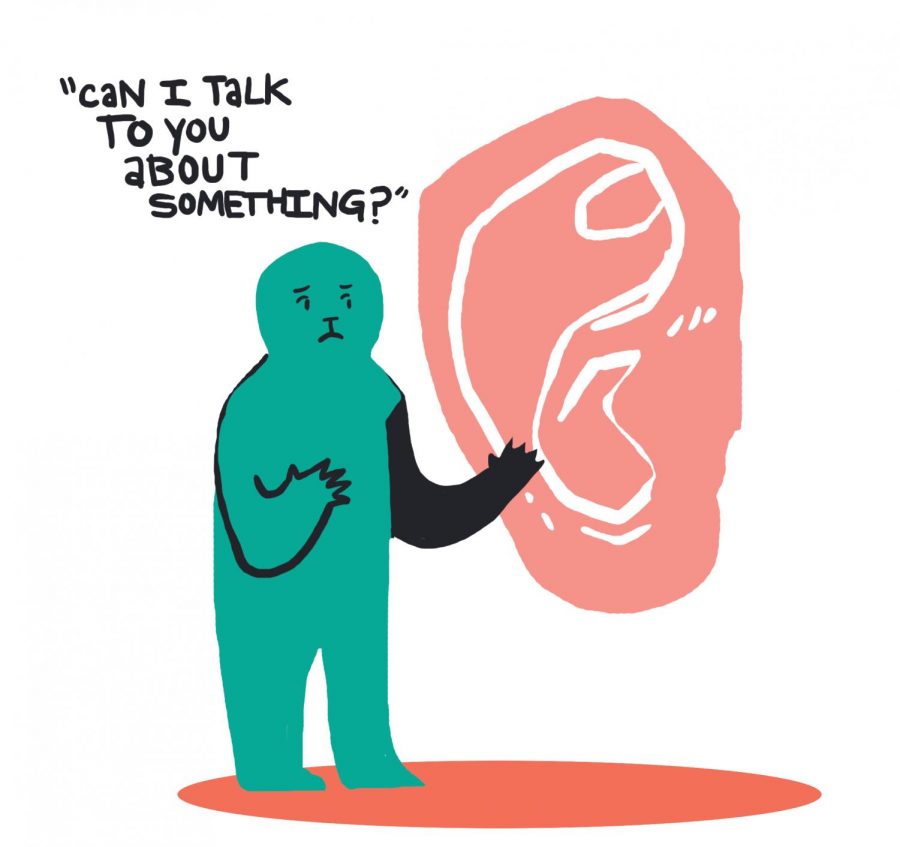How to Listen to Someone
April 8, 2020
I was sitting at my kitchen table after I finished the research for this article and when I finally found the answers to the questions I would ask myself every time someone opened up to me with their story: Did I listen well? Did they feel heard? Did I talk too much? What I realized was that it didn’t matter what happened during or after the fact, what mattered was my intention before the storytelling even started.
Listening to someone else’s story feels a lot like an exercise in appreciation and observation. It’s a balancing act between holding a safe space and being an active listener. Mostly, I think, it necessitates mindfulness and simultaneous awareness of the fact that neurologically, it’s inherently difficult for us to be good listeners.
We can start by having the intention of listening in a manner that involves engaging and connecting with ideas at an emotional level — this is called “third-ear” listening. Contrastingly, “two-ear” listening is when one listens for mere facts. The former is a better approach, considering that ideas help us remember facts more effectively.
To help one hold this intention while actively listening, they can cultivate a beginner’s mind which involves being genuinely curious about what is going on in the other person’s head. This genuine curiosity prompts us to then ask questions to show we are listening and understanding. There are two types of questions we can ask: ones that are content-based and focus on that person’s feelings, and others that repeat back what we’ve heard to ensure understanding.
In addition to repeating back, Shanda Stevens, MS, LPC, NCC and BCN, recommends maintaining good eye contact, giving a nod or some kind of verbal cue that you’re listening. Additionally, Stevens suggests that rather than pulling on our past experiences as a way to provide understanding, we should use those feelings while we are listening to provide empathy.
Another factor in third-ear listening involves what I like to call holding space. Holding space for someone is when you listen without judgment or without thinking about what you’re going to say next. It’s allowing the other person to finish their thought and thus allow them to take us somewhere new. Oftentimes, we may feel like we know where someone is going with their story but we should practice holding our presumptions back.
It’s also important to understand why we feel like we know where the person is going with their story. The Harvard Business Review explains the reasons why we want to interrupt: “When we listen, we ask our brains to receive words at an extremely slow pace compared with its capabilities… We can listen and still have some spare time for thinking.” The fact that we have spare time between the other person’s words often gets us sidetracked; however, we can use our spare time efficiently by engaging in mental activities “geared to the oral discourse and taking place concurrently with that oral discourse.”
Those mental activities involve periodically reviewing and mentally summarizing the points of the talk and listening in between the lines or paying attention to nonverbal cues.
We should be aware of emotional filters that prevent open-mindedness and should look for evidence that proves us wrong in what we believe. It’s easy to be disengaged when we are listening to someone who agrees with our beliefs so when we look for how we could be proved wrong, we not only are more engaged but obtain a more in-depth understanding.
If one carries the intention of listening, in addition to the active listening skills that validate the speaker, one can increase the quality and trust in their relationships, motivate and inspire others and give others the feeling of acceptance. The overall goal is to establish a connection and in establishing that connection we allow and invite each other to discover more about ourselves.






